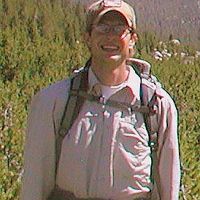Blankinship & Hart, 2012
Consequences of manipulated snow on soil gaseous emission and N retention in the growing season: a meta-analysis.
Blankinship, J.C., Hart, S.C. (2012)
Ecosphere 3(1).
-
Sierra, COLLABORATOR
-
Sierra, INVESTIGATOR
Abstract
Most seasonally snow covered ecosystems will continue to face more shallow and discontinuous snowpack as the world warms. Annual greenhouse gas and nitrogen (N) budgets in seasonally snow covered ecosystems are partly controlled by snow depth and duration, but little is known about the generality of these responses during the growing season and the driving mechanisms across sites. Using results from snow addition and removal experiments, we performed a meta-analysis to quantify soil biogeochemical responses during the growing season to decreasing winter snow depth, and to identify correlative variables that best explained changes in carbon dioxide (CO2) efflux, nitrous oxide (N2O) efflux, and mobile N concentration in runoff, leachate, and soil solution. The moderators tested to possibly explain the effects of manipulated snow depth were the sampling date (earlier vs. later in growing season), the direction of snow manipulation, soil texture, vegetation type, mean annual temperature (MAT), mean annual precipitation (MAP), latitude, and the maximum change in winter soil temperature due to snow manipulation. Across studies, decreasing snow depth caused a 35% reduction in soil CO2 efflux and a three-fold increase in N2O efflux later in the growing season, and a two-fold increase in mobile N concentration throughout the growing season. The tested moderators of CO2 and N2O efflux were important earlier but not later in the growing season. Early in the growing season, decreasing snow depth increased soil CO2 efflux in snow removal experiments at lower latitude sites with a higher MAT and smaller change in winter soil temperature. Decreasing snow depth increased N2O efflux more at lower latitudes sites with a higher MAP and smaller change in winter soil temperature. Changes in mobile N concentration were greater in forest than in non-forest ecosystems, and tended to increase with latitude. Our meta-analysis suggests that winter and summer biogeochemistry are intertwined, and decreasing snow cover generally reduces ecosystem N retention. Future changes in snow cover may impact global carbon and N biogeochemistry at the annual scale, likely driven by interactions between climate, latitude, and vegetation type.
Citation
Blankinship, J.C., Hart, S.C. (2012): Consequences of manipulated snow on soil gaseous emission and N retention in the growing season: a meta-analysis. Ecosphere 3(1).. DOI: 10.1890/ES11-00225.1
 This Paper/Book acknowledges NSF CZO grant support.
This Paper/Book acknowledges NSF CZO grant support.
Explore Further


